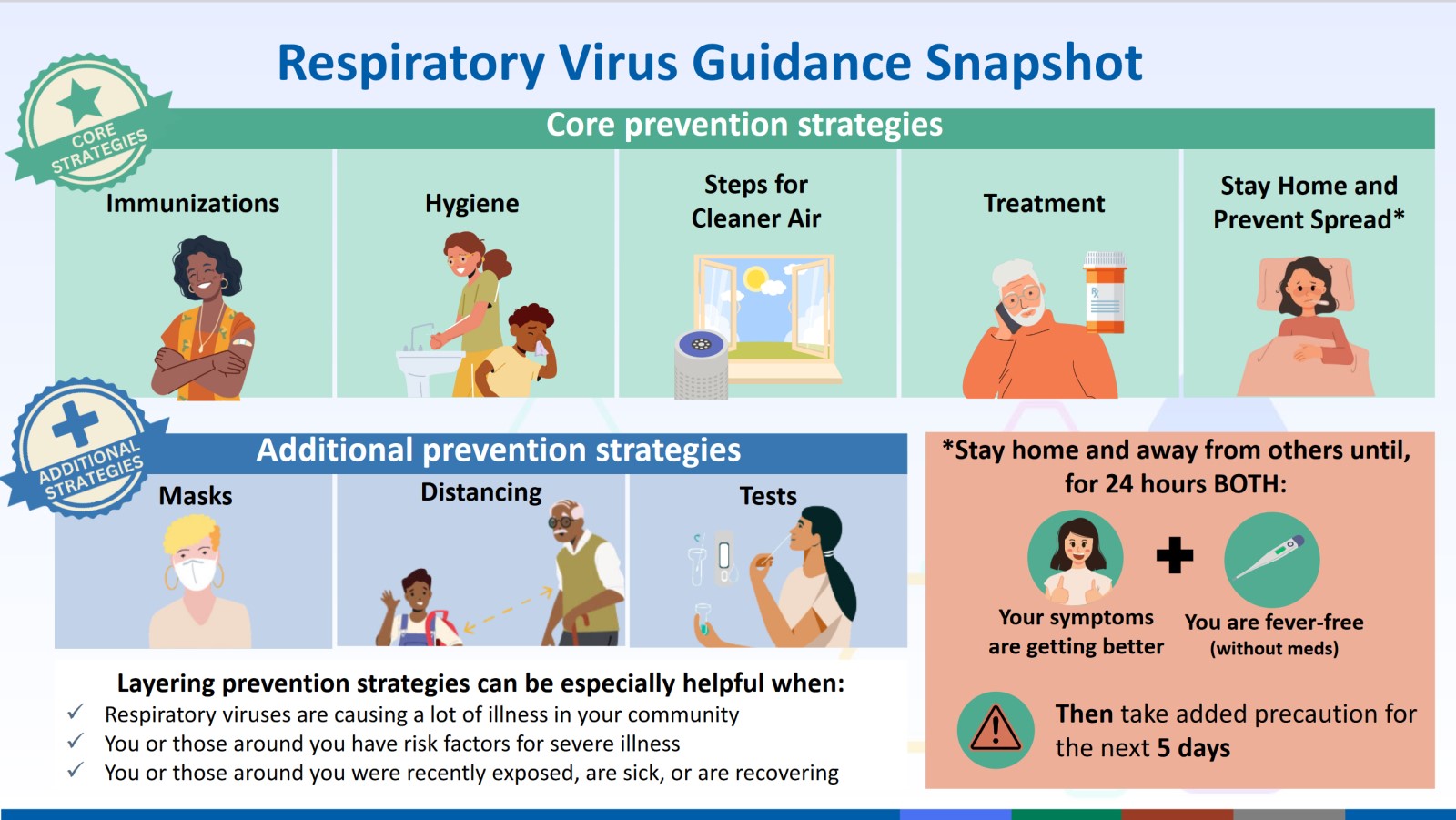Respiratory Virus Guidance
Respiratory viruses commonly cause illness such as flu, COVID-19, and respiratory syncytial virus (RSV), especially in the fall and winter. There are actions you can take to protect yourself and others. This guidance provides practical recommendations and information to help people lower risk from a range of common respiratory viral illnesses, including COVID-19, flu, and RSV in the general population.

Taking steps to prevent the spread of respiratory viruses when you are sick is a core prevention strategy to lower risk from respiratory viruses.
Stay home and away from others, until for 24 hours BOTH:
Your symptoms are getting better, AND
- You are fever-free (without medications)
Then, take added precaution for the next five days.
Protect Yourself from Getting Sick: The most important thing you can do to protect yourself from COVID-19, flu, and RSV is to stay up to date on your recommended vaccines. Even when vaccines don’t prevent infection, they often tame these viruses, reducing severity, and preventing their worst outcomes, like hospitalization and death.
Along with staying up-to-date on your vaccines, practicing good hygiene by covering your coughs and sneezes, washing or sanitizing your hands often, and cleaning frequently touched surfaces can help. Also, taking steps for cleaner air can help reduce the spread of respiratory viruses. This can mean bringing in fresh outside air by opening a window, purifying indoor air, or having outdoor social activities.
If You Get Sick: Even if you practice these core prevention strategies, you may still catch a virus and develop respiratory symptoms. If that happens, the updated Guidance recommends two actions:
- Step 1: Stay at home. As much as possible, you should stay home and away from others until at least 24 hours after both:
- Your symptoms are getting better overall, and
- You have not had a fever (and are not using fever-reducing medication).
This advice is similar to what has been recommended for flu for decades and will help reduce the spread of COVID-19 and other respiratory viruses during the most contagious period after infection. Not all respiratory virus infections result in a fever, so paying attention to other symptoms (cough, muscle aches, etc.) is important as you determine when you are well enough to leave home. If your symptoms are getting better, and stay better for 24 hours, you are less likely to pass your infection to others and you can start getting back to your daily routine and move on to step 2.
- Step 2: Resume normal activities, and use added prevention strategies over the next five days, such as taking more steps for cleaner air, enhancing your hygiene practices, wearing a well-fitting mask, keeping a distance from others, and/or getting tested for respiratory viruses. People can choose to use these prevention strategies at any time. Since some people remain contagious beyond the “stay-at-home” period, taking added precautions can lower the chance of spreading respiratory viruses to others.
People who are at higher risk for severe illness who start to feel sick should seek health care right away so that they can access testing and/or treatment. Early treatment for COVID-19 or flu may prevent severe disease in people at higher risk, even if they are up to date with their vaccines.
